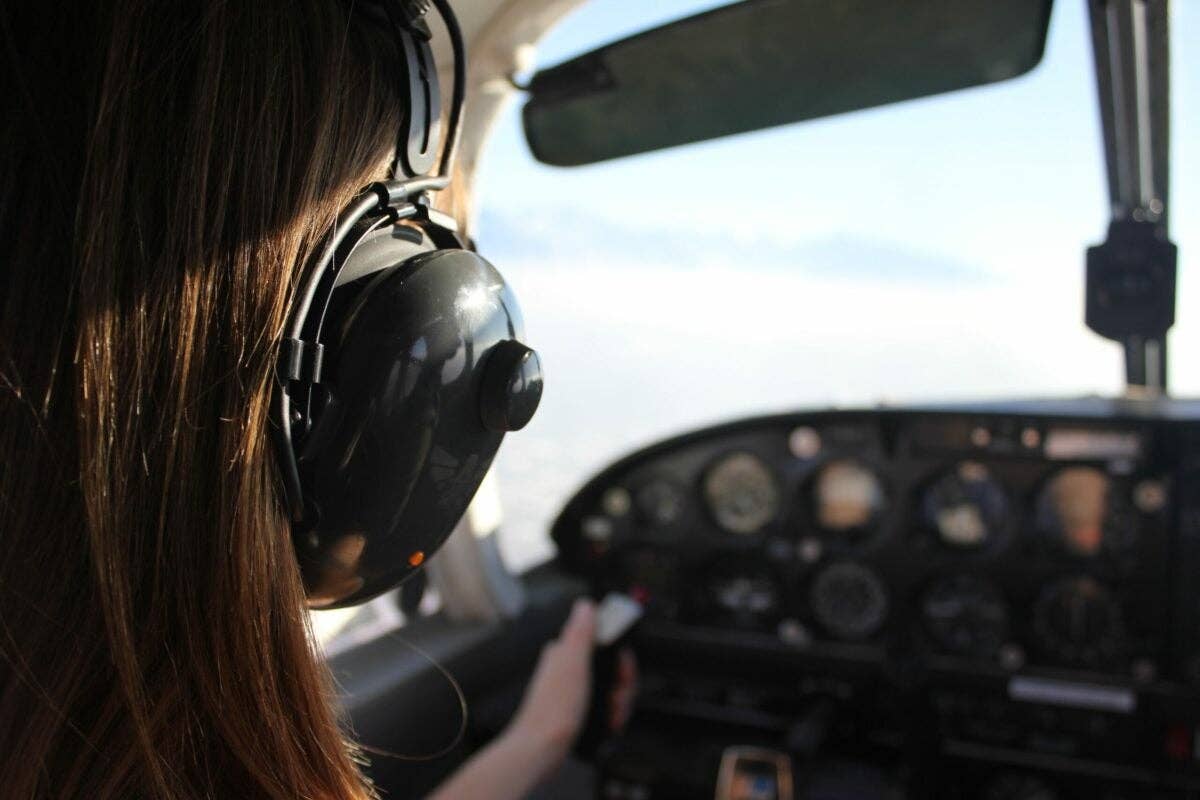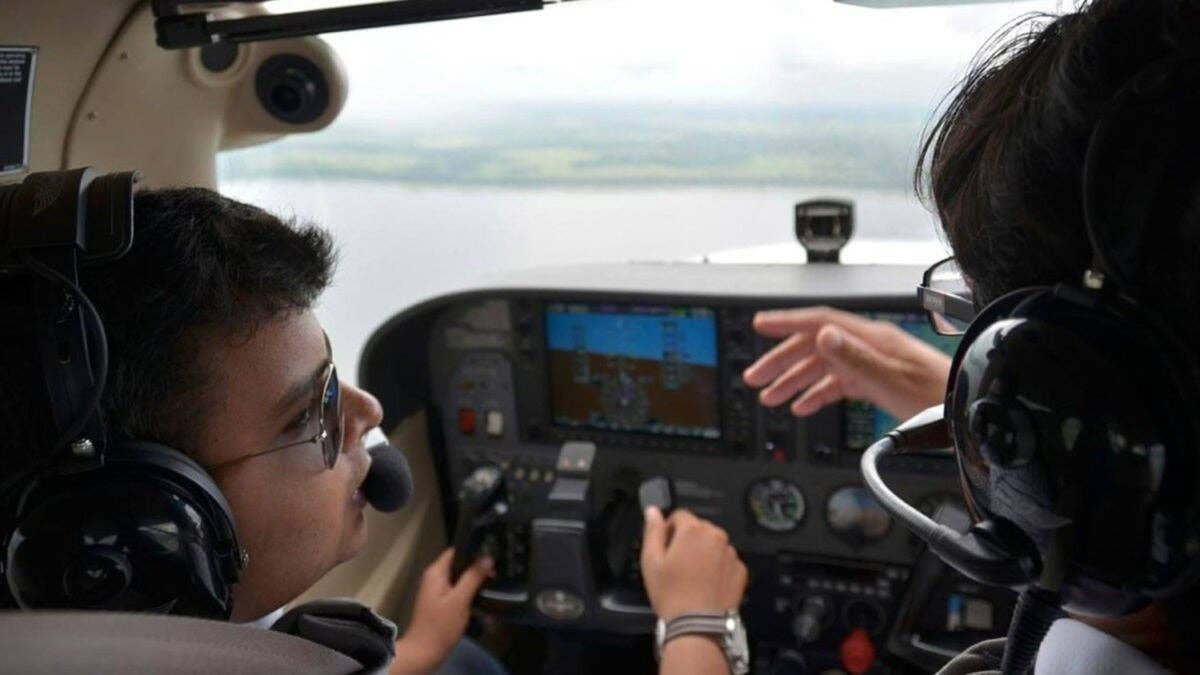How Do You Teach Good Judgment?
The debate over the impending Airman Certification Standards begs an answer to this age-old question.

There’s a debate about whether flight instructors can teach judgment. Michael Wildes has definite opinions. Adobe Stock
I briefed the student on what the touchdown procedures were going to be.
“When we get into ground effect, and you think you have the runway made, begin adding the opposite rudder as you reduce power on the operative engine. Keep the nose straight, and keep us on the centerline. Okay?”
He responded that he understood.
We entered the pattern at another local airport, and as we discussed, we lined up for the runway on a long final. I went ahead with the simulated engine-failure procedure, and the student did well to recover and configure the airplane for a single-engine approach. All we had to do now was land the airplane. It was all going well until we were over the top of the runway, and it was time for the student to carry out the procedure like we discussed.
Except nothing went as planned.
For some reason, the student couldn’t get the nose straight to touchdown, so I called “go around,” and that’s when the student pushed only one power lever forward, leaving the simulated dead engine at idle. It would’ve been fine if he also paired it with the correct rudder to keep us upright, but less than 100 feet off the ground, I quite clearly saw my whole life flash before my eyes as we began rolling over. The rapid asymmetrical thrust and lack of rudder escalated this flight into a mini aerobatic lesson.
“I have the flight controls!” I yelled instinctively, reuniting the opposite, and simulated failed-power lever with the one now at full power, and coordinating the rudders to return us to straight and level flight. “What were you thinking?” I nervously asked the student, but as I quizzed my unassuming student’s face, it was clear our heads weren’t in the same place, and this is when I decided we should call it quits.
I couldn’t stop my legs from shaking when I got on the ground. It was the first time I wondered if this profession was worth it.
Trying to regain my composure, I wondered to myself, why would he only push power to full on one engine during the go around? How is it that, when faced with the same information, two people sometimes don’t make the same decision? Didn’t he know we would roll over?
Where was his judgement?
How do I even teach that?
Can you really teach judgment?
That’s been at the center of a growing discussion in pilot training. From large departments recruiting pilots to the examiners conducting checkrides, everyone seems to have the same gripe with pilots: many of them lack good judgment.
They either omit or commit the right thing to do, in critical phases of flight, like my own student on my flight.
It’s one thing to teach stick-and-rudder skills, but trying to shape someone’s ability to make good decisions in a timely manner, and in complex environments, is another. The paradox compounds when—even though the crux of flight training depends on adapting to and following standard operating procedures (SOPs)—sometimes you need to think outside the box. This is where things get murky.
We argue that people should use common sense, but maybe our expectations of the other person in the flight deck are unfairly high because flying, after all, isn’t a common thing for humans to do. Philosophy aside, being a good pilot does require good judgment, and it is something we have to train for.
In his best-selling book, Thinking Fast & Slow, Daniel Kahneman writes about how the mind works, across the more automatic and instinctive system one, and the more deliberate, pensive system two.
When my student only pushed one power lever forward when I called the go-around, he was using only his system-one reflex. His system-two framework would’ve required him to consider the effects of asymmetric thrust and add enough rudder to prevent us from almost rolling over. But that would’ve required more brain power, and the brain naturally likes to take the path of least resistance.
So, therein, lies the opportunity for teaching good judgment. People make thousands of subconscious decisions everyday relying on their automatic system on one side of their brain. It wouldn’t be hard to infer that these decisions are based on a series of values, or “heuristics” as Kahneman describes in his book. The challenge in flight instructing is that everyone shows up with their own set of embedded values, based on culture, previous experiences, studying and other factors, and the collective safety of the national airspace systems requires everyone to conform to the same “values,” standard operating procedures.
How do we achieve that? I think this is what the purpose of the on-going switch to the airman certification standards (ACS)—and away from the incumbent practical test standards (PTS)—is designed to do.
The ACS: Systematic Judgment
Much has been made about the new ACS switch with many people arguing how impossible it is to teach pilots judgment. Some would argue that some people should never be up front in an airplane, and I get it. But there are more nuances to be added to that.
For one, instructors need to do more work with their students on the ground. If Kahneman is right, developing automatic judgment requires encoding our minds with more information that will allow us to make more optimal decisions. Good judgment, then, comes from context, which people develop when the mind is surrounded from many corroborating sources. Ironically, this makes an airplane a bad place to actually learn how to fly.
This is also what the ACS, in my opinion, creates an opportunity to do. The working group that developed it included a wide-ranging list of industry leaders that comprised large flight schools, trade groups, training providers, and representatives from the FAA. This was a more collaborative process than the top-down framework that shaped the PTS.
The ACS does a great job creating a reasonable framework of knowledge, risk management, and skills that is designed to improve collective, systematic judgment for a wider range of pilots. It may not be a perfect system, but it is closer to the one we want.
This is where instructors need to start. In my time conducting checkrides, I was shocked at how many students weren’t aware of the criteria they were being tested against.
Mentorship: Individual Judgment
Shaping individual judgement is another pursuit. This requires mentorship, especially from more mature pilots, and because of the topsy-turvy nature of the flight instruction industry where pilots fresh out of flight schools are instructors, this is a poor training structure for students. While it isn’t possible to flip the industry on its head yet, there are some things that new pilots can do to shorten the gap.
How to Condense Judgment
The flight department I worked for was unique, mostly because of its scale. Over my time as an instructor, I’ve flown with more than 300 unique pilots from 80-plus countries, male and female, ages 17 to 70. It was incumbent on me to ensure that the person I was flying with had the same “value” system to operate from, so that our judgment in critical moments would be optimal.
How did I do that?
Begin with the end in mind. The first thing I do with a student is talk about the checkride, and in fact, the ACS. This helps us avoid training purgatory but also sets the standard for training. It widens the context the student was training in, beyond just steps, to greater situational awareness. Setting the tone from the beginning is the most important thing an instructor can do for students.
Point your students in the right direction for what to study. The ironic part of learning to become a pilot today is that there is an ocean of information, and opinions today, especially on the internet, and a naïve student can easily lose their way. To ensure that your student is matching your values, it would be wise to point them firmly in the right direction. The most rewarding thing I’ve experienced as an instructor is when teaching became more of a discussion with a student who had context of what was being introduced in a lesson, because I had them study before the lesson. This removes a lot of opportunities for misalignment.
Finally, as the crux of the ACS is to get students to operate at a higher level—the correlation level of thinking—it’s incumbent on instructors to create a bank of training scenarios to help students improve how they think. Come up with straightforward scenarios that have clear decision trees and take the time to go through the actions with the student on the ground. Explain what the outcome of each step would be, and how to take the optimal one. This, after all, helps the student to create the context, or common sense that you want them to demonstrate in the critical phase of flight, but it won’t be common until you shape it.
See you out there!
Michael Wildes is an aviation professional with an appreciation for all things aviation, media, business, and philanthropy. A 2016 Embry-Riddle graduate, Wildes has his bachelor’s degree in Aeronautical Science, and currently works at the university’s flight department as a flight check airman. He’s also served as an assistant training manager and quality assurance mentor. He holds MEI, CFI, and CFII ratings. You can e-mail Michael at editorial@flying.media.

Sign-up for newsletters & special offers!
Get the latest FLYING stories & special offers delivered directly to your inbox






